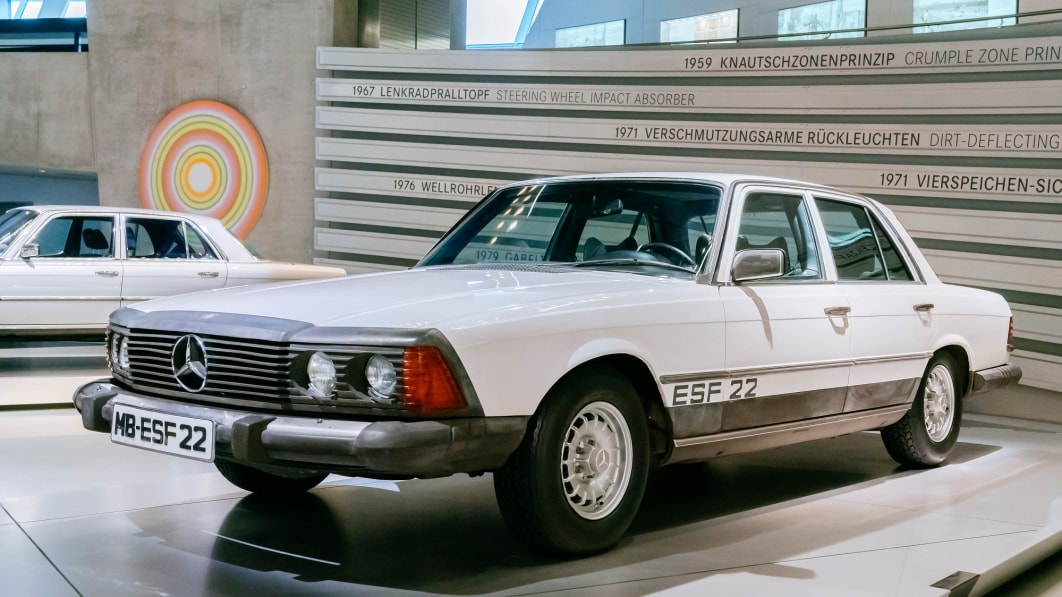[ad_1]

We take features like crumple zones and airbags for granted in 2023 — it would be alarming to buy a new car without them. Set your time machine to the 1970s, and the safety equipment found in cars was primitive at best. Mercedes-Benz is one of the firms that participated in safety-related research programs during this decade, and it’s highlighting a prototype named ESF 22 that in many ways predicted the future.
Unveiled at a conference held in 1973 in Kyoto, Japan, the ESF 22 was based on the W116-generation S-Class launched the previous year. It was the third safety-related prototype that Mercedes-Benz presented to the public, and it picked up where its predecessor left off by inaugurating a raft of features. While it’s visibly related to the S-Class, its front end is dominated by black, impact-absorbing plastic parts rather than adorned by stately-looking bright trim. Mercedes-Benz wasn’t moving down-market: it fitted a plastic grille and plastic headlight bezels in the name of pedestrian protection. Engineers also mounted the headlights deep into the bezels to avoid glass-related injuries.
The driver faced a huge steering wheel with a padded hub cover and a padded dashboard, and every passenger could count on a seatbelt to stay safe in the event of an accident. The ESF 22 also incorporated many of the safety advancements developed for its predecessors, such as anti-lock brakes and headlight wipers. All told, Mercedes-Benz claimed that its big, experimental sedan gave occupants “a good chance” of surviving a head-on impact against a rigid object, like a wall, at 40 mph, which was a remarkable feat (especially 50-plus years ago).
Mercedes-Benz’s ESF 22 never saw the light that awaits at the end of a production line; that wasn’t the point. However, some of the features developed for it and other ESF prototypes reached production in the company’s later models. ABS brakes appeared on the W116’s list of options in late 1978, and the W126-generation S-Class (which replaced the W116) became the first Mercedes-Benz equipped with an airbag in December 1980. Fast-forward to 2023, and every single car sold new in the United States features an impact-absorbing front end.
The tradition of testing new technologies in what are essentially rolling laboratories continued after the curtain fell on the ESF project. The 1981 Auto 2000 concept explored what a luxury car could look like in the new millennium while previewing a sharper design language, Mercedes-Benz showed S-Class- and GLE-based ESF prototypes in 2009 and 2019, respectively, and the electric EQXX prototype unveiled in 2021 showcases some of the engineering that will trickle down to the battery-powered cars that the company will launch in the 2020s.
Related video:
[ad_2]
Source link